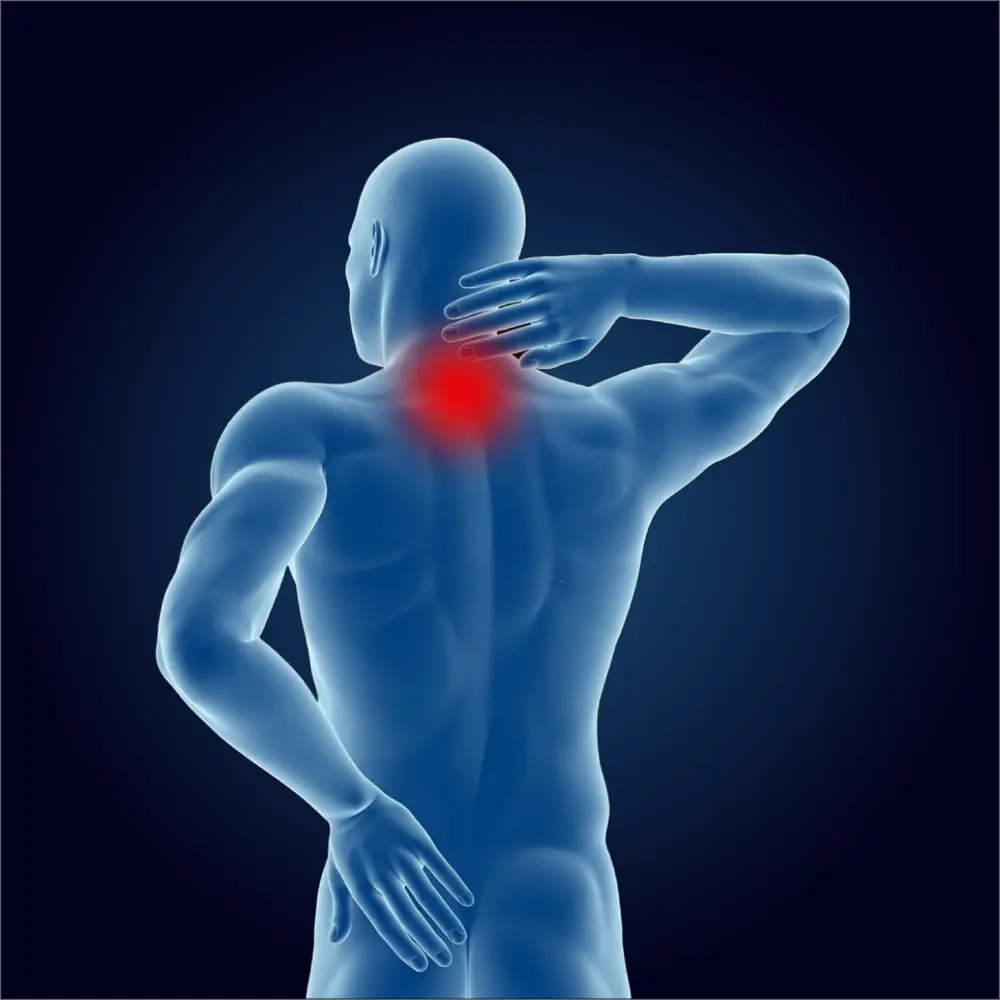NECK PAIN
Neck pain is the second most common problem relating to movable body parts and it affects about two-thirds of the population.
Symptoms:
- Neck pain occurs while moving the neck
- The neck is stiff
- Pain occurs behind the head, between the shoulder blades and arms
- There is numbness, weakness, or tingling in the upper limbs
- There is an experience of losing balance, and dizziness
- There are balancing issues
Neck pain usually shows up because of aging, postural and mechanical irregularities in people. However, there are some deeper issues like disc degeneration, disc bulges, disc herniation, facet joint arthritis, spondylosis which can cause neck pain.
Disc degeneration: The discs of the vertebrae help in smooth movement along the spine. When the disc thins out due to wear and tear, there is more friction during movement, causing pain.
Disc herniation: The gel inside the vertebrae that acts as a shock absorber leaks out of the disc when it becomes brittle and cracks open. This puts pressure on the exposed nerve that causes the pain.
Poor posture: The most common example of poor posture is leaning forward for a prolonged period of time (head and shoulders bent forward- like working in front of a computer). There is an undue strain on the muscles and ligaments in the neck which results in pain.
Mental health concerns: Depression and anxiety have been known to cause neck pain.
In the case of asymptomatic chronic neck pain, a pain caused by mechanical and degenerative factors is called cervical spondylosis. It is also referred to as cervical osteoarthritis or neck arthritis.
Non-surgical spinal segment decompression or Physical therapy or both can be done, depending on the condition.
Medications or injections are prescribed as and where needed.
If your neck pain is mild or moderate, you can manage the pain by:
- Using hot or cold presses to relieve the pain
- Using ice packs to reduce any swelling
- Using a hard pillow to support your neck better
- Taking pain-killers

